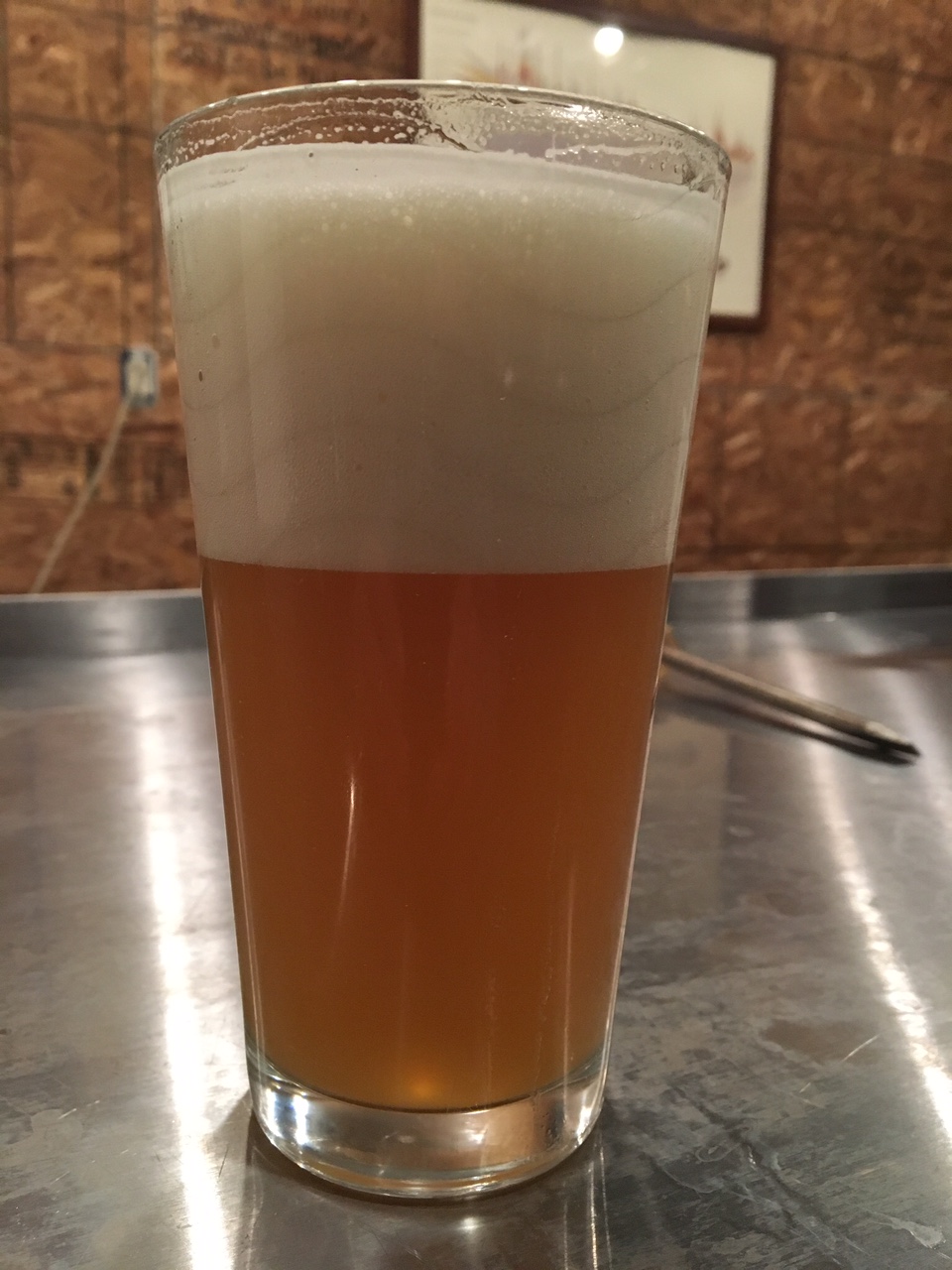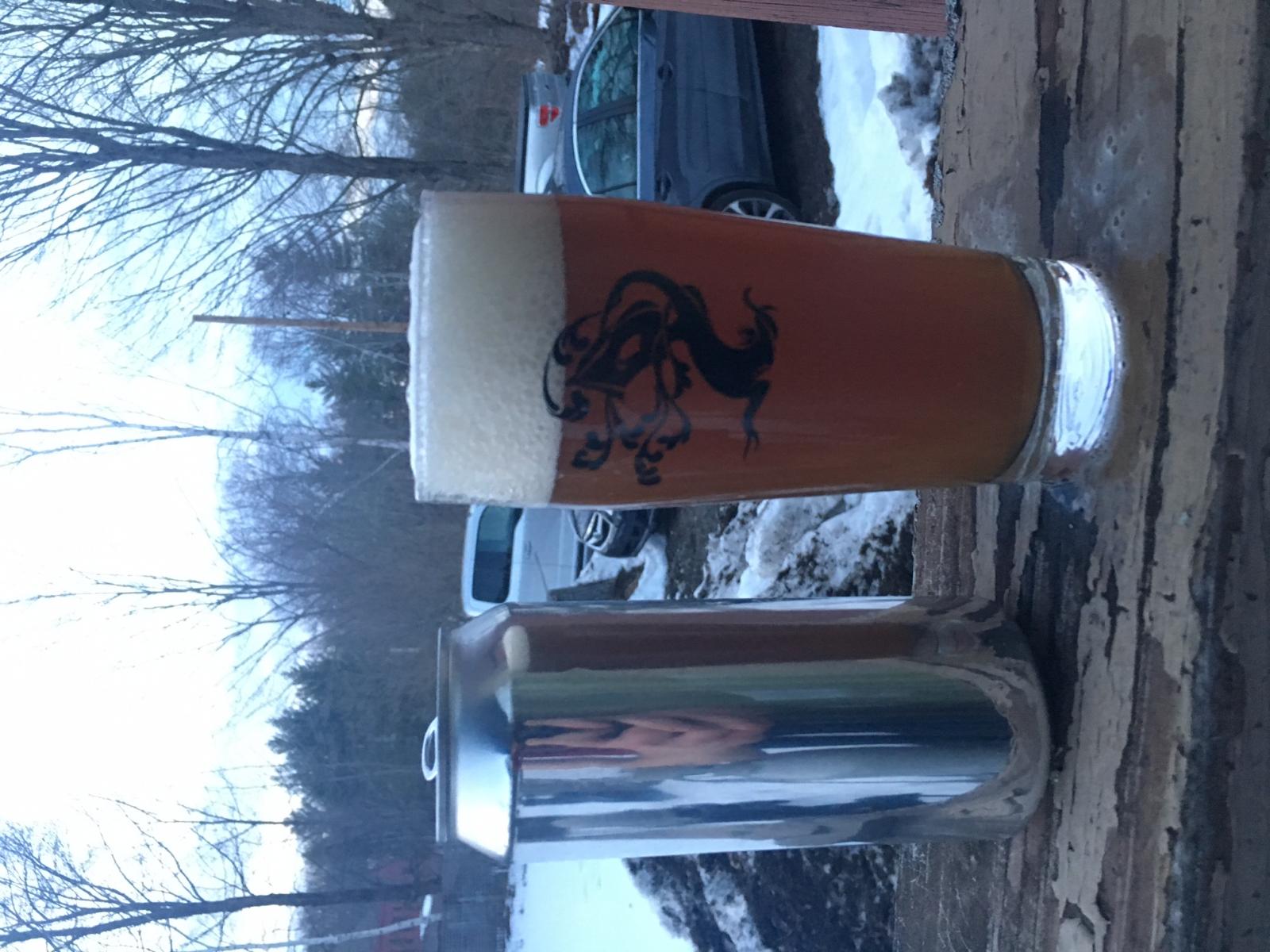Hey all, I have recently been having an issue with our IPA changing color after kegging or canning and can't quite seem to figure out what's causing it, hoping that some advice could be shed on the project. I'll start with saying we have a 20 gallon electric brewery consisting of SS Brewtech equipment for the most part, a 1/2 bbl conical fermenter from SS Brewtech, and a Blichmann plate chiller.
We recently made a couple batches of IPA which one changed color in the kegs and the other changed color in the cans. The beer was a beautiful color prior to this as you can see from the pictures below and then after we canned/kegged - we use the Oktober Design can seamer and Blichmann beer gun for purging and filling cans - and it sat for a week it darkened to the color of the second picture (I apologize for the poor lighting but it is a much darker muddy color). The first beer we made, which I do not have any pictures of, changed color in the keg prior to canning while the second was fine coming out of the keg but changed color in the cans. The odd thing to me is that it seems to be changing on week 4 after brewing. The first IPA (color changed in the keg) wasnt canned until week 4, and the second IPA (color changed in cans) was canned on week 3 and the picture was taken on week 4.
My first thought after the first batch that did this was oxidation. I changed a few things in our process for the second batch including closed transfers from conical to co2 purged keg but still got the same result of a beer changing color post packaging.
Our recipe pretty much consists of the following for a final batch size of 15 gallons (we did add a little carapils):
29 lbs 13.7 oz Pale Malt (2 Row) US (2.0 SRM)
5 lbs 7.4 oz Oats, Flaked (1.0 SRM)
1 lbs 1.5 oz White Wheat Malt (2.4 SRM)
1.00 oz Columbus/Tomahawk/Zeus (CTZ) [15.50 %] - Boil 60.0 min
2.25 oz Galaxy [14.00 %] - Boil 5.0 min
2.25 oz Mosaic (HBC 369) [12.25 %] - Boil 5.0 min
1.50 oz Citra [12.00 %] - Boil 5.0 min
2.25 oz Galaxy [14.00 %] - Steep/Whirlpool 15.0 min
2.25 oz Mosaic (HBC 369) [12.25 %] - Steep/Whirlpool 15.0 min
1.50 oz Citra [12.00 %] - Steep/Whirlpool 15.0 min
4.0 pkg London Ale III (Wyeast Labs #1318) [124.21 ml]
3.50 oz Galaxy [14.00 %] - Dry Hop 7.0 Days
3.50 oz Mosaic (HBC 369) [12.25 %] - Dry Hop 7.0 Days
2.00 oz Citra [12.00 %] - Dry Hop 7.0 Days
3.50 oz Galaxy [14.00 %] - Dry Hop 3.0 Days
3.50 oz Mosaic (HBC 369) [12.25 %] - Dry Hop 3.0 Days
2.00 oz Citra [12.00 %] - Dry Hop 3.0 Days
We also change the water profile using Bru'N water to reflect roughly 180 ppm chloride and 100 ppm sulfate based on the water testing that we had done. The water testing on our well water which we use to brew is as follows (ppm):
pH: 6.6
TDS: 52
Na: 3
K: 2
Ca: 7
Mg: 3
CaCO3 cation Hardness: 30
NO3: 0.9
SO4: 4
Cl: 4
CO3: <1.0
HCO3: 21
CaCO3 anion alkalinity: 17
Anyone have any thoughts on what could be causing this? I am not sure if our water could be effecting it, our process, our recipe or something else. We have not yet made any changed to our water other than adding gypsum and calcium chloride based on BruN waters recommendations based on what we were looking for and our grain bill. It is hard to believe that it could be oxidation, but it could very well be. Thanks!


We recently made a couple batches of IPA which one changed color in the kegs and the other changed color in the cans. The beer was a beautiful color prior to this as you can see from the pictures below and then after we canned/kegged - we use the Oktober Design can seamer and Blichmann beer gun for purging and filling cans - and it sat for a week it darkened to the color of the second picture (I apologize for the poor lighting but it is a much darker muddy color). The first beer we made, which I do not have any pictures of, changed color in the keg prior to canning while the second was fine coming out of the keg but changed color in the cans. The odd thing to me is that it seems to be changing on week 4 after brewing. The first IPA (color changed in the keg) wasnt canned until week 4, and the second IPA (color changed in cans) was canned on week 3 and the picture was taken on week 4.
My first thought after the first batch that did this was oxidation. I changed a few things in our process for the second batch including closed transfers from conical to co2 purged keg but still got the same result of a beer changing color post packaging.
Our recipe pretty much consists of the following for a final batch size of 15 gallons (we did add a little carapils):
29 lbs 13.7 oz Pale Malt (2 Row) US (2.0 SRM)
5 lbs 7.4 oz Oats, Flaked (1.0 SRM)
1 lbs 1.5 oz White Wheat Malt (2.4 SRM)
1.00 oz Columbus/Tomahawk/Zeus (CTZ) [15.50 %] - Boil 60.0 min
2.25 oz Galaxy [14.00 %] - Boil 5.0 min
2.25 oz Mosaic (HBC 369) [12.25 %] - Boil 5.0 min
1.50 oz Citra [12.00 %] - Boil 5.0 min
2.25 oz Galaxy [14.00 %] - Steep/Whirlpool 15.0 min
2.25 oz Mosaic (HBC 369) [12.25 %] - Steep/Whirlpool 15.0 min
1.50 oz Citra [12.00 %] - Steep/Whirlpool 15.0 min
4.0 pkg London Ale III (Wyeast Labs #1318) [124.21 ml]
3.50 oz Galaxy [14.00 %] - Dry Hop 7.0 Days
3.50 oz Mosaic (HBC 369) [12.25 %] - Dry Hop 7.0 Days
2.00 oz Citra [12.00 %] - Dry Hop 7.0 Days
3.50 oz Galaxy [14.00 %] - Dry Hop 3.0 Days
3.50 oz Mosaic (HBC 369) [12.25 %] - Dry Hop 3.0 Days
2.00 oz Citra [12.00 %] - Dry Hop 3.0 Days
We also change the water profile using Bru'N water to reflect roughly 180 ppm chloride and 100 ppm sulfate based on the water testing that we had done. The water testing on our well water which we use to brew is as follows (ppm):
pH: 6.6
TDS: 52
Na: 3
K: 2
Ca: 7
Mg: 3
CaCO3 cation Hardness: 30
NO3: 0.9
SO4: 4
Cl: 4
CO3: <1.0
HCO3: 21
CaCO3 anion alkalinity: 17
Anyone have any thoughts on what could be causing this? I am not sure if our water could be effecting it, our process, our recipe or something else. We have not yet made any changed to our water other than adding gypsum and calcium chloride based on BruN waters recommendations based on what we were looking for and our grain bill. It is hard to believe that it could be oxidation, but it could very well be. Thanks!




